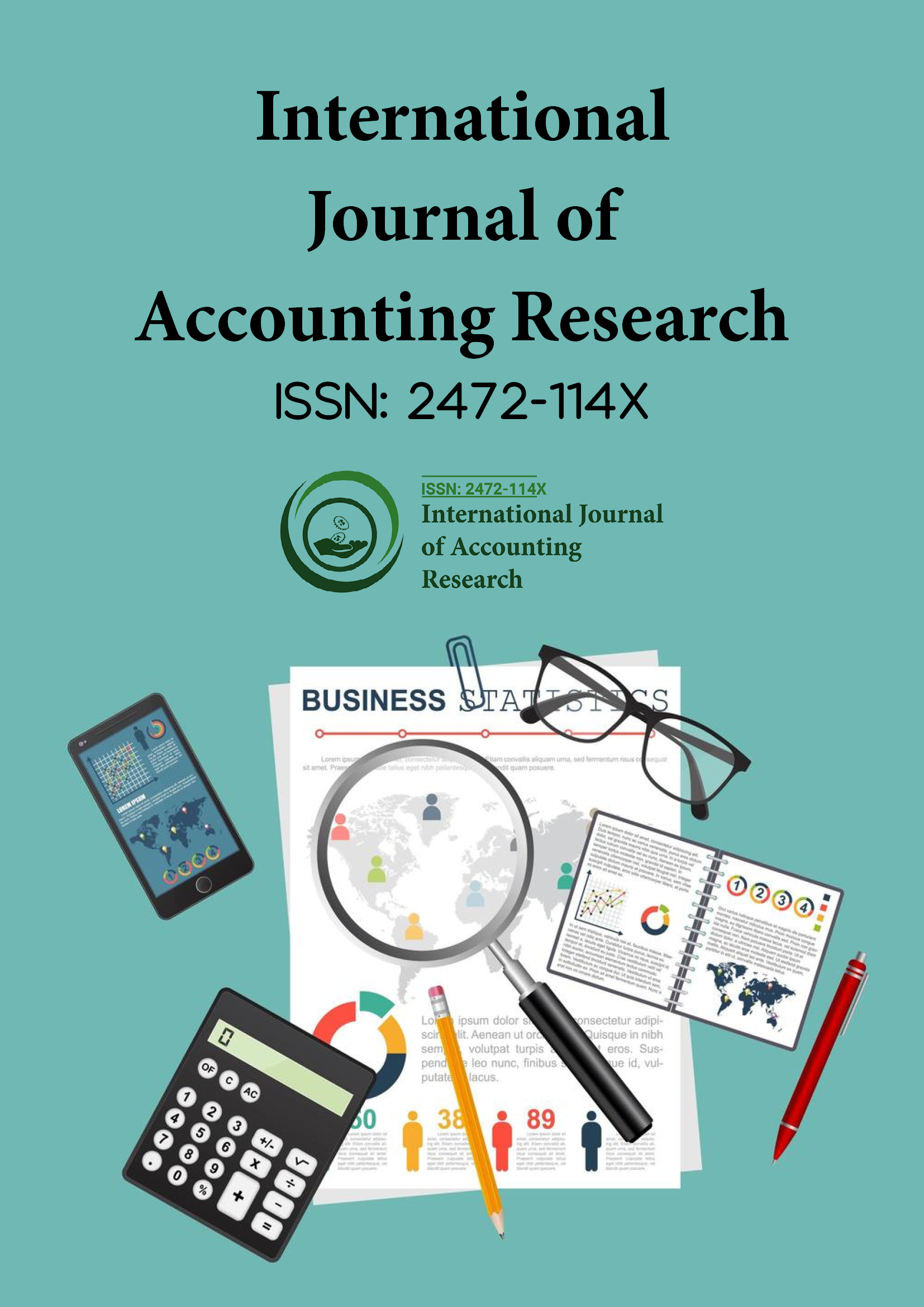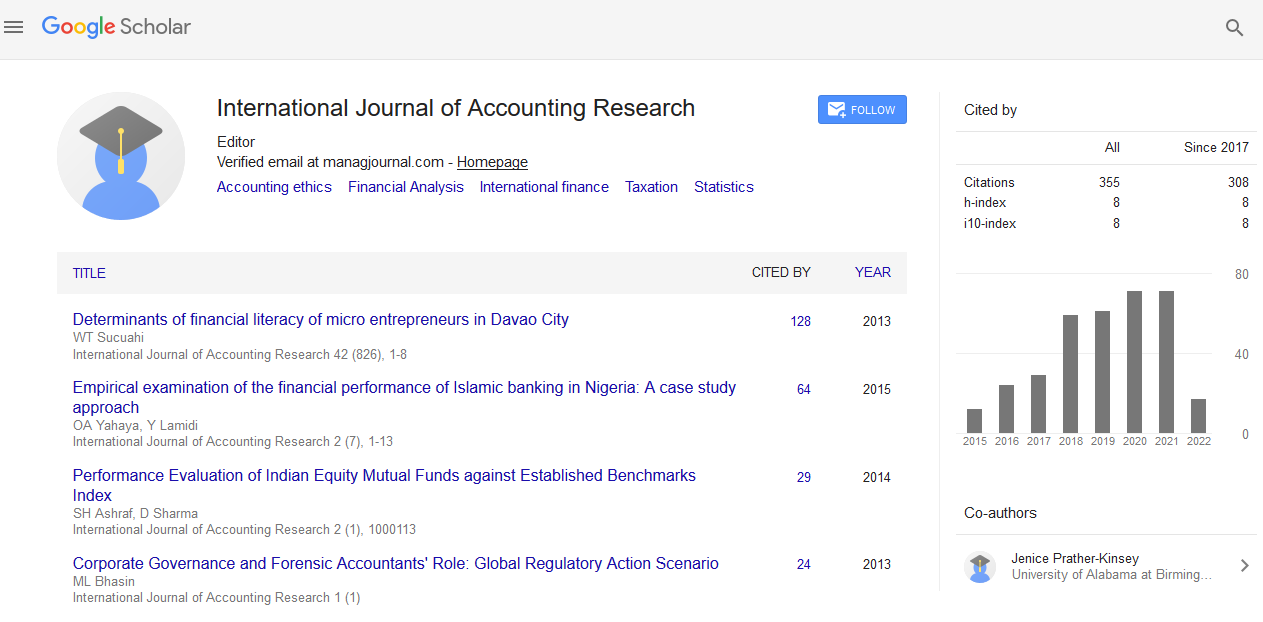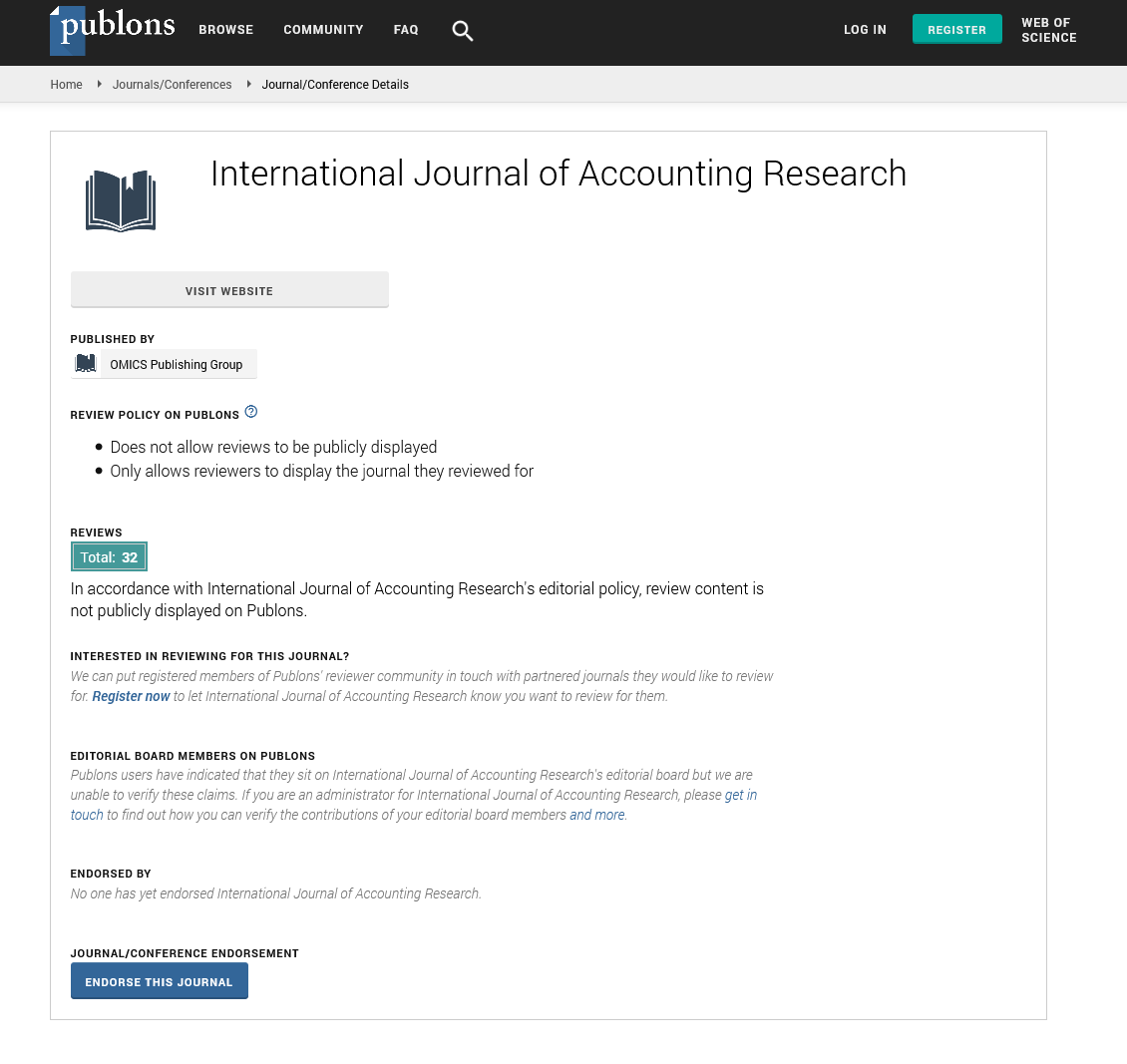Indexed In
- Open J Gate
- RefSeek
- Hamdard University
- EBSCO A-Z
- Scholarsteer
- Publons
- Euro Pub
- Google Scholar
Useful Links
Share This Page
Journal Flyer

Open Access Journals
- Agri and Aquaculture
- Biochemistry
- Bioinformatics & Systems Biology
- Business & Management
- Chemistry
- Clinical Sciences
- Engineering
- Food & Nutrition
- General Science
- Genetics & Molecular Biology
- Immunology & Microbiology
- Medical Sciences
- Neuroscience & Psychology
- Nursing & Health Care
- Pharmaceutical Sciences
Perspective - (2022) Volume 10, Issue 5
Balance Sheet: Components and the Limitations of the Balance Sheet
Zhiming Hsu*Received: 02-May-2022, Manuscript No. IJAR-22-16920; Editor assigned: 06-May-2022, Pre QC No. IJAR-22-16920 (PQ); Reviewed: 20-May-2022, QC No. IJAR-22-16920; Revised: 30-May-2022, Manuscript No. IJAR-22-16920 (R); Published: 07-Jun-2022, DOI: 10.35248/2472-114X.22.10.273
Description
A balance sheet is a financial statement that shows the assets and liabilities of a corporation at a certain point in time. It is one of the three fundamental financial statements used to assess a company's performance. A balance sheet is a document that investors and other stakeholders use to obtain a sense of an organization's financial health. It enables them to evaluate the rate at which the company makes returns or compare current assets and liabilities to determine the business's liquidity. Comparing two or more balance sheets from various periods of time might reveal how a company has evolved.
Stakeholders can better grasp the company's future with this information. The line items that appear on a balance sheet will differ slightly depending on the type of organization and industry. Because they all deal with the same types of transactions, the line items utilized in the balance sheets of companies in the same industry are usually comparable. The line items are displayed in order of liquidity, which implies that the assets that are most easily convertible into cash are mentioned first, followed by the liabilities that are scheduled to be settled soonest.
Current assets are those that are projected to be liquidated within one year of the balance sheet date, whereas long-term assets are those that are expected to be liquidated over a longer period of time. All assets, with the exception of fixed assets, are categorized as current assets. All checking and savings accounts, as well as coins and bills kept on hand, certificates of deposit, and Treasury bills, are considered cash and cash equivalents. All investments in debt and equity securities that can be easily sold off in a liquid market are considered marketable securities. Any supplier invoices that have already been paid but for which the corresponding service has not yet been consumed are considered prepaid expenses.
Current liabilities are those that are expected to be settled within one year of the balance sheet date, and long-term liabilities are those that are expected to be settled over a longer period of time.
This usually indicates that all liabilities are categorized as current liabilities, with the exception of long-term debt. Below is a list of the most frequent liability accounts, organized by liquidity. The sum paid into the firm by shareholders in exchange for shares in the business, as well as any earnings kept in the business, are included in the shareholders' equity portion. It also deducts any monies paid to shareholders to buy back their shares.
The par value of all shares sold to investors and not repurchased by the company is referred to as stock. This line item can be divided into two categories: ordinary stock and preferred stock. The excess amount that investors have paid over the par value of shares is referred to as additional paid-in capital. This figure is usually much higher than the sum in the stock line item. The net amount of all profits and losses made by the business since its foundation, minus any dividends paid to shareholders, is known as retained earnings.
Because it reflects the financial condition of the reporting business as of the balance sheet date, the balance sheet is often regarded as the second most essential of the financial statements (after the income statement). When evaluated with the other financial statements, it provides a clear picture of a company's financial status. The balance sheet can be used to look at four different sorts of metrics, which are shown below. When comparing these measures to the outcomes of other organisations for benchmarking reasons, it's vital to keep the analysis limited to businesses in the same industry, because financial structures differ significantly.
The balance sheet has a number of flaws that should be addressed. One source of worry is that some of the data in this report is presented at its historical cost (for example, fixed assets), while other data is supplied at its current cost (such as marketable securities). As a result, it displays a variety of cost types. A second issue is that some of the data in the study has been tampered with. The amount of accounts receivable, for example, will be determined by the offsetting balance in the allowance for doubtful accounts, which is a guesstimated number. Furthermore, accelerated depreciation can be utilised to fraudulently reduce the reported quantity of fixed assets, giving the impression that the fixed asset investment is lower than it actually is. A third point of concern is that the report's data is presented as of a specific point in time rather than for a reporting period, and thus may not be representative of typical account balances over time.
Citation: Hsu Z (2022) Balance Sheet: Components and the Limitations of the Balance Sheet. Int J Account Res. 10:273.
Copyright: © 2022 Hsu Z. This is an open access article distributed under the terms of the Creative Commons Attribution License, which permits unrestricted use, distribution, and reproduction in any medium, provided the original author and source are credited.


